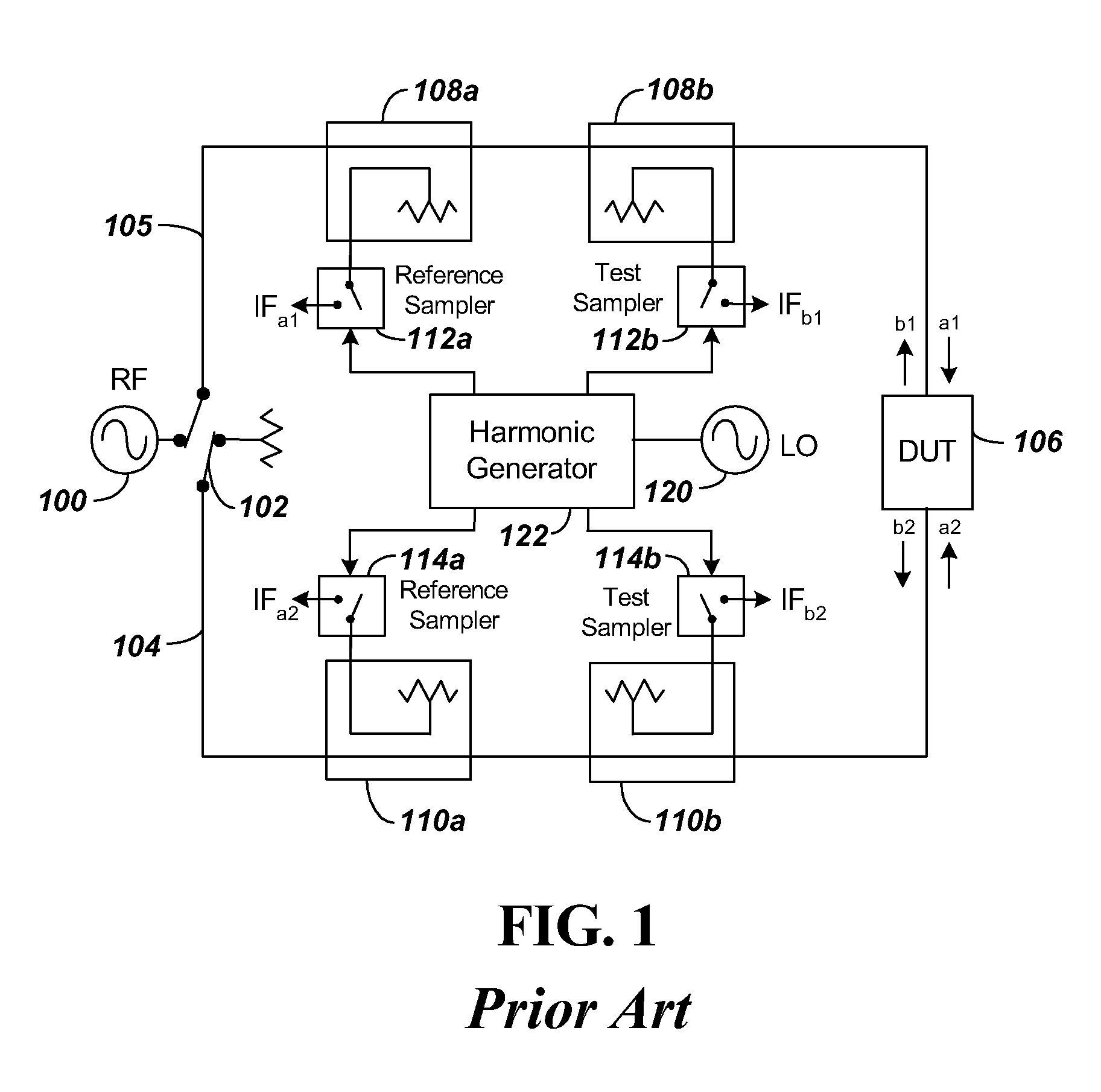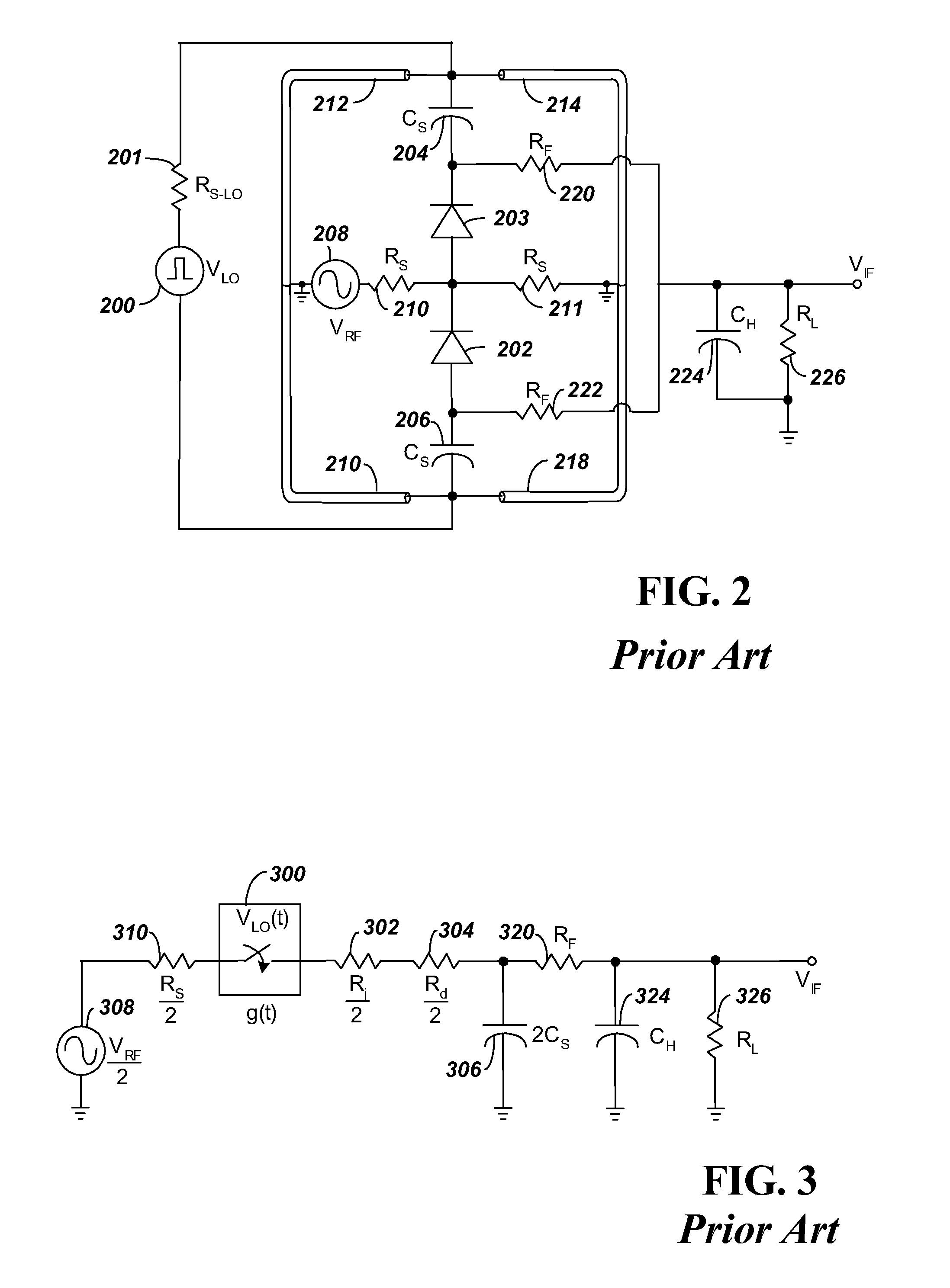Frequency-scalable shockline-based VNA
a shockline and frequency-scalable technology, applied in the field of components, can solve the problems of increasing the noise figure of the sampler due to image-response conversion, providing equivalent-time sampling at the expense of increased conversion loss, and achieving optimal noise performance characteristics, reducing or increasing the fall time of the output voltage waveform, and achieving scalability and broadband performance.
- Summary
- Abstract
- Description
- Claims
- Application Information
AI Technical Summary
Benefits of technology
Problems solved by technology
Method used
Image
Examples
Embodiment Construction
[0043]To accomplish frequency scaling when using NLTLs in embodiments of the present invention, it is initially realized that by changing gating time, Tg, frequency vs. conversion efficiency can be controlled. A reduction in the gating time Tg of the sampling Schottky diodes can be shown to provide an increase in RF output bandwidth at the expense of reduced conversion efficiency. Adjusting the Bragg frequency of the NLTL as well as the length of the shorted stubs in the sampler changes this gating time, Tg, and thus allows scaling of the sampler's RF bandwidth.
[0044]FIG. 6 shows a time-domain illustration of a harmonic sampling process wherein an ideal switch gated by a VLO signal at a rate 1 / TLO samples an RF signal VRF with a gating time of Tg to produce an output VIF. The plots of FIG. 6 illustrate the effect of adjusting gating time Tg in the switch with the realization that the periodic nature of the RF waves makes possible their down-conversion by equivalent-time sampling, al...
PUM
 Login to View More
Login to View More Abstract
Description
Claims
Application Information
 Login to View More
Login to View More - R&D
- Intellectual Property
- Life Sciences
- Materials
- Tech Scout
- Unparalleled Data Quality
- Higher Quality Content
- 60% Fewer Hallucinations
Browse by: Latest US Patents, China's latest patents, Technical Efficacy Thesaurus, Application Domain, Technology Topic, Popular Technical Reports.
© 2025 PatSnap. All rights reserved.Legal|Privacy policy|Modern Slavery Act Transparency Statement|Sitemap|About US| Contact US: help@patsnap.com



